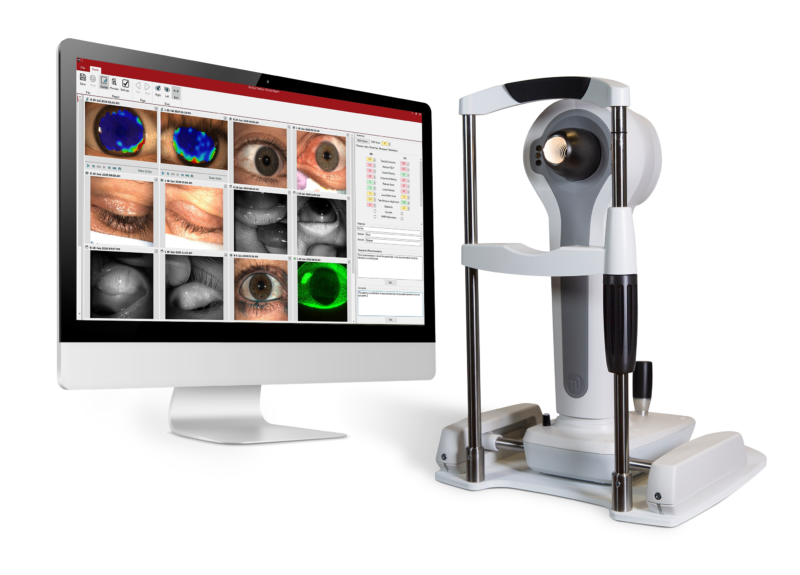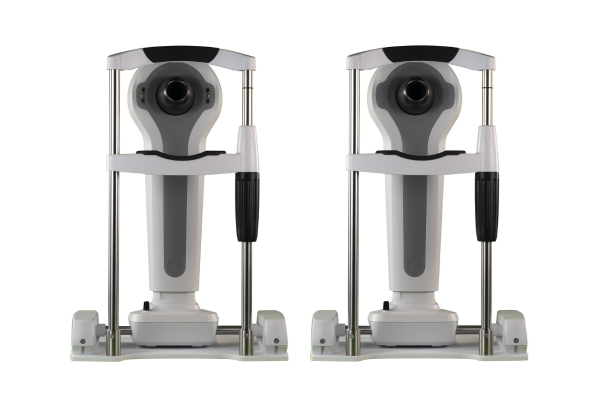Are you ready to replace your reliable E300 corneal topographer? Here’s why the versatile medmont meridia™ should be top of your shopping list.
Our next generation corneal topographer, the medmont meridia™, builds on the renowned technology of the E300. It comes in two distinct models.
The meridia™ Classic generates the same high-performance topography you’ve come to rely on. It offers the same limbus-to-limbus coverage as the E300—essential for nailing specialty contact lens fittings and making fast, confident clinical decisions—with a newly widened field of view.
It also includes colour imaging and simplified image capture ergonomics.
Expanding on the Classic and E300, the popular meridia™ Professional also offers premium anterior and fluorescein imaging and video, and a comprehensive dry eye evaluation suite.
While some topographers sacrifice corneal data for versatility, the Meridia Pro empowers you to expand your practice offerings with one instrument without compromising topography quality.
And the meridia™’s software, Medmont Studio 7, enables you to select from more than 110 different attributes to customise your data set.

Upgrade without losing patient data
The meridia ™ is backwards compatible with your E300. You can compare a baseline topography map captured on your E300 with a follow-up on the Meridia.
Maintain full continuity of your patient database; vital for continuity of care.
Supercharge your practice (and save space and money)
The meridia™ can do more than your E300 thanks to a long list of well-thought-out additional features.
Optometrist Adrian Rossiter added the Meridia™ Pro to his practice because he “didn’t want one instrument for dry eye [as well as] an E300 topographer to manage [his] sizeable orthokeratology patient base.”
Similarly, university lecturer Gavin Swartz appreciates being able to perform baseline and follow-ups with the same tool.
“The incorporation of anterior photography, including sodium fluorescein imaging, non-invasive TBUT and meibography means a wide range of baseline and post treatment data can be collected with the patient positioned at one instrument,” he said.
Watch Randy Kojima FAAO explain how the meridia™ works for your practice.
Promote buy-in for disease management
You’re certainly not alone if you ever struggle to get patients to comply with ocular surface disease treatment.
The meridia™ promotes buy-in with easy-to-digest reports that provide actionable diagnostic information as well as detailed, graded anterior eye images that illustrate treatment progression.

Become a widely referred contact lens practice
Looking to develop the specialty contact lens arm of your practice to include ortho-k, RGP and scleral lenses?
The meridia™’s software contains many contact lens design options, and you can achieve the perfect lens fit with as much or as little design input as you like. Use the contact lens simulator or integrate with popular contact lens design software including EyeSpace and WAVE.
You can also export data to a contact lens lab so they can design lenses for you or troubleshoot lens fit by viewing your images and video as captured on the meridia™.
Learn more about how the meridia ™ supports DED management
Improve time-management
When asked how the meridia™ compares to his E300, practice owner Gavin Swartz cited efficiency as the biggest differentiator.
He said, “the addition of fluorescein images and videos takes it to the next level. This device enables me to take images while the patient is in the practice and leave the decision-making on lens design changes until later in the day when I have time. It also serves as a record for how the lens performed during previous visits.”
Choosing between the Classic and the Professional?
We’ve compiled a list of features to make a meridia™ model comparison easier.
Meridia™ Classic and Professional
- 16mm field of view, limbus-to-limbus colour topography
- 10mm+ coverage in a single capture, depending on HVID
- HD colour camera
- Optimised depth of field focus
- Contact lens simulation
- Corneal and scleral lens simulation
- Ergonomic quick keys
- Medmont Studio 7
Meridia™ Professional additional features
- Anterior imaging and video
- Meibomian gland imaging and video (infrared)
- Fluorescein imaging and video
- Tear meniscus height measurement
- Pupil measurements
- 2-10x digital zoom function
- Dry eye patient screening reports
- Proven imaging grading scales (Efron, BHVI, Meiboscale)
Ultimately, the instrument you choose depends on the type of practice you want to be and the patients you want to see. The medmont meridia™ is the clear choice if you want the same level of topography as the E300 and to expand your practice offerings—and in turn your patient database and bottom line.
Now the question is: what do you want your practice to offer?

